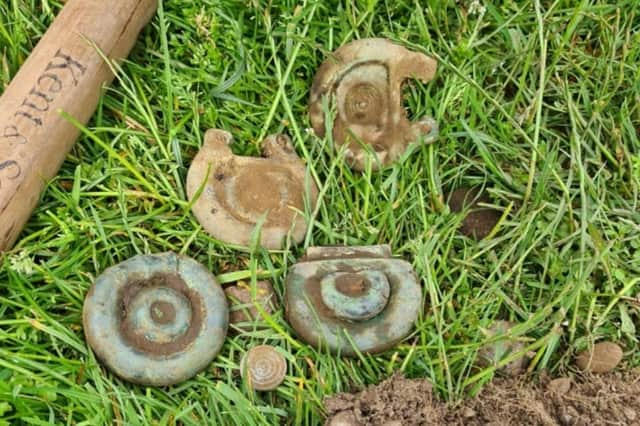Newly discovered Bronze Age artefacts have been found in Scotland - here's what they tell us


A metal detectorist has discovered a hoard of Bronze Age artefacts in the Scottish Borders which experts have described as “nationally significant”.
Mariusz Stepien was searching a field near Peebles with friends on 21 June when he found a bronze object buried half a metre underground.
Advertisement
Hide AdAdvertisement
Hide AdThe group camped in the field and built a shelter to protect the find from the elements while archaeologists spent 22 days investigating.
But just what is the Bronze Age? And when was it?
Here's everything you need to know:
What is the Bronze Age?
The Bronze Age is a historical period used to define a stretch of time in which civilisations were quickly developing tools and technology due to their possession of the ability to produce bronze
Bronze Age civilisations are defined by their use of bronze, a metal alloy comprised mainly of copper and tin that was much harder and more durable than other metals available at the time.
Civilisations able to produce bronze therefore gained a technological advantage over others.
Advertisement
Hide AdAdvertisement
Hide AdThe Bronze Age was preceded by the Stone Age, and followed by the Iron Age. While iron is naturally abundant, its high melting point placed it out of reach of Bronze Age civilisations.
Tin and copper's relatively low melting points placed them within the capabilities of pottery kilns, meaning bronze could be smelted.
When was the Bronze Age?
Since different civilisations developed at slightly different rates around the world, there are no set dates when talking about the Bronze Age.
For instance, in Africa and the Indian Subcontinent, the Bronze Age is generally agreed to have spanned between 3300 and 1200 BC, but places like Europe and East Asia were slightly 'late' to the party - their Bronze Ages didn't kick off until around 3200.
Advertisement
Hide AdAdvertisement
Hide AdThat's due in part to copper and tin being less common in those regions, placing more of a reliance on trading with other, bronze-rich civilisations.
Europe also developed technology and tools at a much slower rate, and Europe's Bronze Age is thought to have stretched 2,600 years to 600 BC.
When was the Bronze Age in Britain?
Great Britain's Bronze Age is considered to have been the period from around 2100 to 750 BC, and was a period of great change for the region.
During this time, migration brought new people from the continent, and a changing climate (warm and dry weather gave way to much wetter conditions ) forced the population away from easily defended sites in the hills and into the fertile valleys.
Advertisement
Hide AdAdvertisement
Hide AdThis gave rise to greater instances of livestock farming, which in turn contributed to economic growth and mass forest clearances.
During this time, large megalithic monuments continued to be constructed, including Stonehenge.
What was found in Scotland?
Among the items found were a complete horse harness – preserved by the soil – and a sword that have been dated as being from 1000 to 900 BC.
They also found decorated straps, buckles, rings, ornaments and chariot wheel axle caps.
Advertisement
Hide AdAdvertisement
Hide AdMr Stepien said: “I thought I’ve never seen anything like this before and felt from the very beginning that this might be something spectacular and I’ve just discovered a big part of Scottish history.
“I’m so pleased that the earth revealed to me something that was hidden for more than 3000 years. I still can’t believe it happened.”
The hoard has been moved from the site in a large block of soil and taken to the National Museums Collection Centre in Edinburgh.
Why are the latest finds important?
Emily Freeman, head of the Treasure Trove Unit overseeing the recovery and assessment of the find, said: “This is a nationally significant find – so few Bronze Age hoards have been excavated in Scotland.
Advertisement
Hide AdAdvertisement
Hide Ad“It was an amazing opportunity for us to not only recover bronze artefacts, but organic material as well."
David Harvie, Queen’s and Lord Treasurer’s Remembrancer (QLTR), said: “This Bronze Age hoard is highly significant and promises to give us a new insight into Scotland’s history."
Similar hoards are very rare in Britain, though two famous examples are from Parc-y-Meirch, Denbighshire, and Heathery Burn Cave, Co Durham.
Only one type of similar hoard is known from Scotland, which was found at Horsehope Craig, Peeblesshire in 1864.